Subphylum Vertebrata Suborder Iguania Rank Species | Phylum Chordata Higher classification Ctenosaura | |
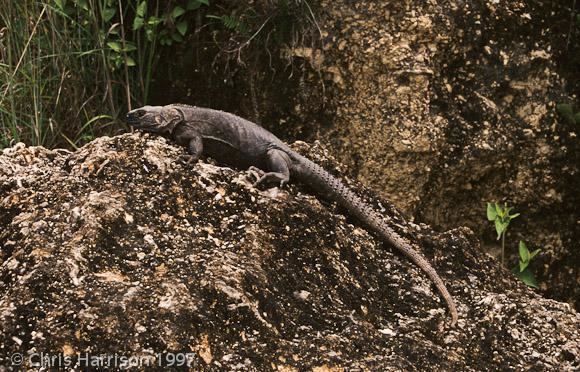 | ||
Similar Ctenosaura, Reptile, Ctenosaura clarki, Ctenosaura hemilopha, Ctenosaura defensor | ||
Ctenosaura acanthura, commonly known as the northeastern spinytail iguana, is a species of iguanid lizard endemic to Mexico.
Contents
Taxonomy
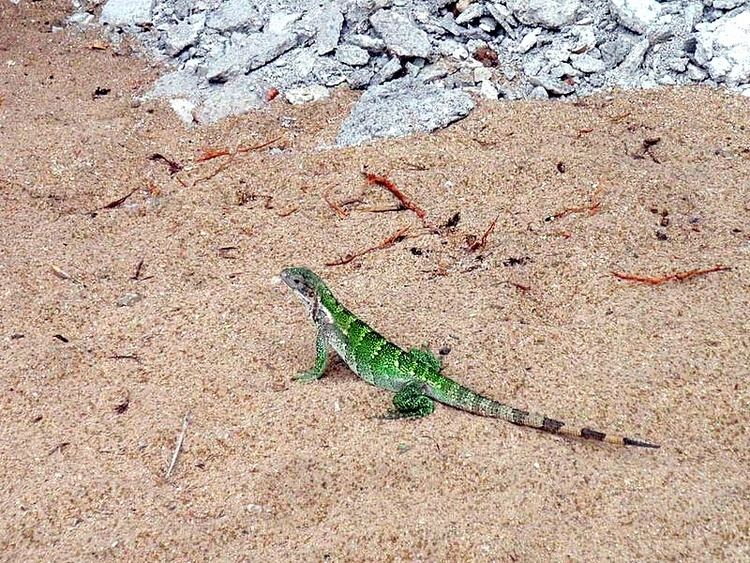
The northeastern spinytail iguana was first described by British zoologist George Shaw in 1802. The generic name, Ctenosaura, is derived from two Greek words: ctenos (Κτενός), meaning "comb" (referring to the comblike spines on the lizard's back and tail), and saura (σαύρα), meaning "lizard". Its specific name is the Greek word akanthos (Ἄκανθος), meaning "thorn".
Description

Northeastern spinytail iguanas have distinctive keeled scales on their long tails, which give them their common name. The males are capable of growing up to 1.4 meters (4 ft 7 in) in total length and females slightly shorter at 1 meter (3 ft 3 in). They have a crest of long spines which extends down the center of the back. Their base color is black with white or cream-colored markings.
Diet and behavior
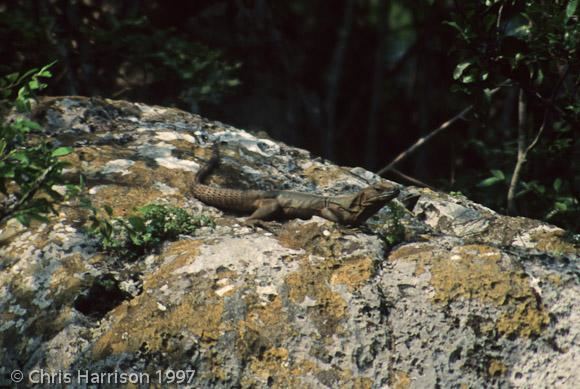
Northeastern spinytail iguanas are excellent climbers, and prefer a rocky habitat with plenty of crevices to hide in, rocks to bask on, and nearby trees to climb. They are diurnal and fast moving, employing their speed to escape predators but will lash with their tails and bite if cornered.
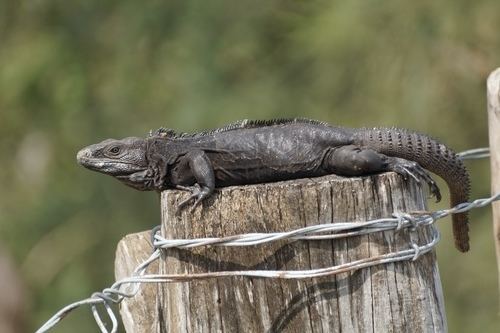
They are primarily herbivorous, eating flowers, leaves, stems, and fruit, but they will opportunistically eat smaller animals, eggs, and arthropods. Juveniles tend to be insectivores becoming more herbivorous as they get older.
Distribution
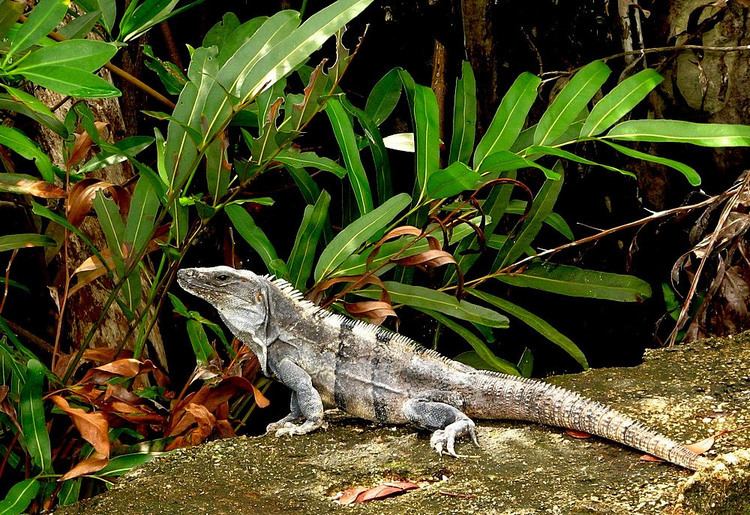
This species may commonly be found around areas of human habitation. These large lizards range from central Tamaulipas to the Isthmus of Tehuantepec between the Mexican states of Veracruz and Oaxaca.
Reproduction

Mating generally occurs in the spring. A male shows dominance and interest by head bobbing, eventually chasing the female until he can catch her and subdue her. Within eight to ten weeks, the female will dig a nest and lay clutches of up to 24 eggs. The eggs hatch in 90 days with the babies digging their way out of the sand. These juveniles are typically green with brown markings, although all-brown hatchlings have been recorded as well.
